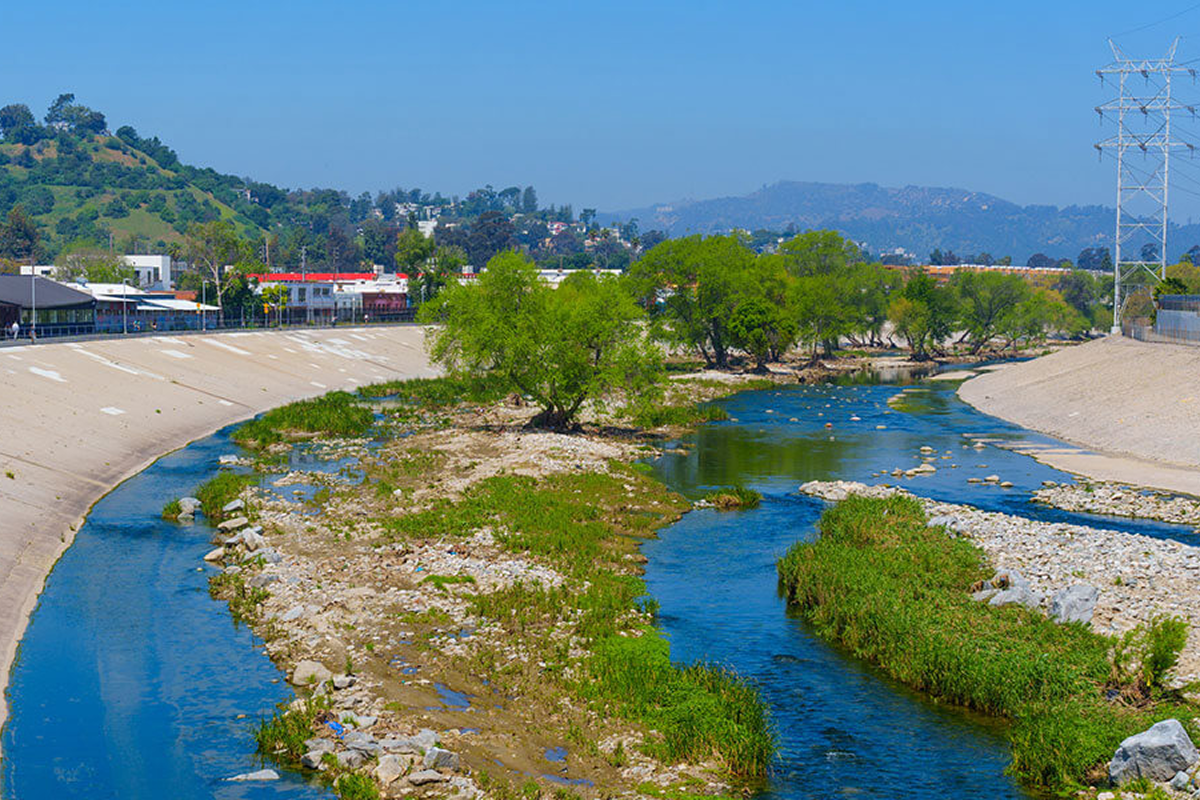In the wake of traumatic urban wildfires, a rainstorm might feel like a relief.
However, with extensive fire damage comes the risk of floods, with the potential to cause still more devastation. In Los Angeles, we saw this after the 1933 Griffith Park Fire, after the 2009 Station Fire in the San Gabriel Mountains and in Malibu after the 2018 Woolsey Fire – to name just a few examples.
Mitul Luhar, Henry Salvatori Early Career Chair and associate professor of aerospace and mechanical engineering and civil and environmental engineering, is an expert in fluid dynamics. One of his current research projects involves engineering a 1:120 scale hydraulic model of a section of the L.A. River, housed in the City of Los Angeles’s Hydraulic Research Laboratory in Frogtown.
The model, which has been developed as part of a collaborative effort that spans the schools of engineering, architecture and cinematic arts at USC, replicates potential flooding outcomes when running water is passed through at fluctuating rate and volume. Given his expertise in environmental fluid mechanics, Luhar is keenly aware of the potential ripple effects of the January 2025 wildfires.
Here, he explains why flood often follows fire – and what engineers can do to mitigate risk.
